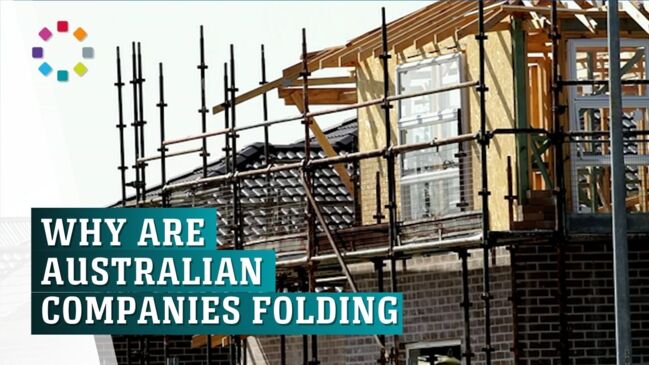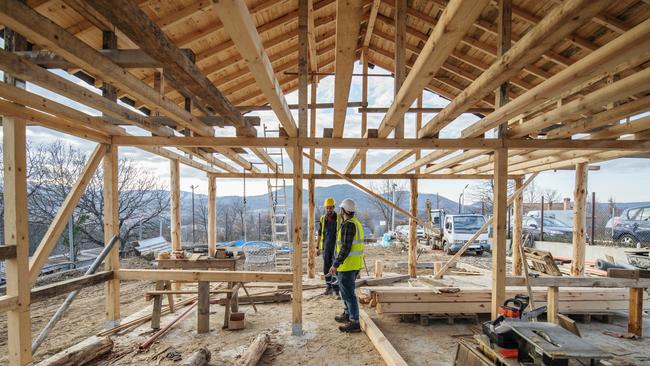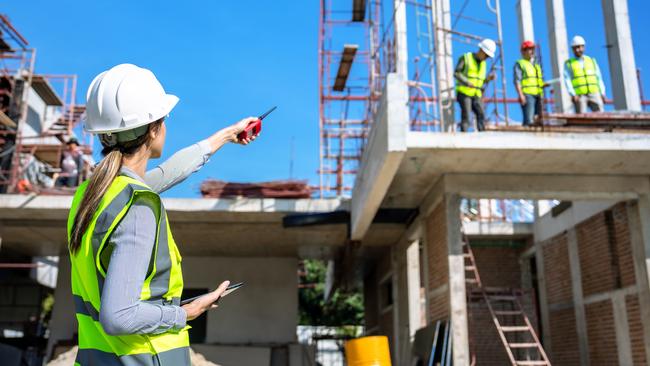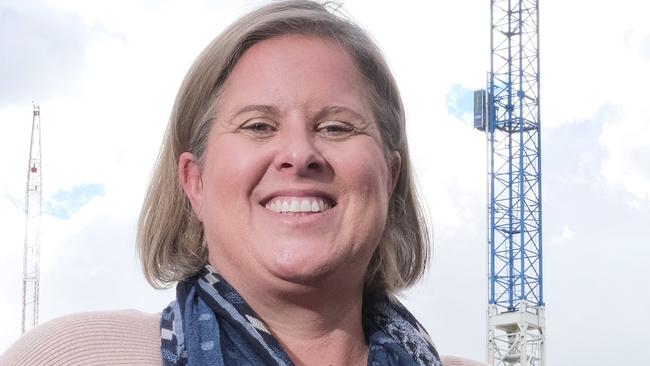‘Rippling effect’: 3000 building companies collapse in past year
It’s a brutal time for Australia with businesses being smashed by hard times — and once sector is copping it worse than any other.

Companies
Don't miss out on the headlines from Companies. Followed categories will be added to My News.
Despite a desperate demand for new homes, the “rippling effect” of an economic downturn has seen a staggering number of building companies go bust in the past year with nearly 3000 failing.
New data showed there were 2832 insolvency appointments made in the construction industry over the past 12 months – a figure which has skyrocketed by 28 per cent compared to the previous year when there were 2213 insolvencies, ASIC data has revealed.
Thousands of building projects and Australian dreams have been impacted amid the chaos.
The list of failed enterprises includes Cubitt’s Granny Flats and Home Extensions, which operated in both the ACT and NSW. It went into liquidation in June impacting 130 projects and 80 staff members, while it also had $5.7 million in debt.
Others include NSW builder Alurt Construction that went bust earlier this month with debts of more than $2 million, Project Coordination (Australia) plunged into administration leaving $120 million worth of projects up in the air, while Rork Projects, which operated across NSW, the ACT, Victoria and Queensland, collapsed with debts of nearly $30 million.

Late last year WA-based Simsai Construction went under leaving 100 projects in limbo and owing money to a trail of debtors totalling an estimated $18 million. In April one of WA’s biggest residential building companies — Collier Homes — fell into liquidation after more than 60 years.
A number of factors have been blamed for the building bust. They include fixed priced contracts that have left builders with little to no profit as expenses soar, labour shortages, planning delays, interest rates rises and regulation causing more red tape.

Master Builders Australia CEO Denita Wawn said the organisation was still seeing the rippling effect of the economic downturn over the last few years, impacting some businesses’ viability in the industry.
“Despite high demand for housing, people are not going ahead with new builds because the numbers just don’t stack up,” she said.
“Since 2019 we have seen the cost of home building increase by 40 per cent. The delivery of new homes and related infrastructure has been obstructed by ongoing and concurrent challenges.
“Tradie shortages, planning and licensing delays, draconian industrial relations changes, material cost inflation, inefficient regulation, unfeasible lending practices and risk allocation are compounded to make projects unsustainable.”

Unfortunately, builders have borne the largest risk, so it’s essential to focus on preventing issues before they arise rather than dealing with the consequences when it’s too late, warned Ms Wawn.
She added the 2018 Building Confidence Report made 24 recommendations to improve industry compliance and enforcement systems.
“Sadly, this report has been sitting on a shelf, with states and territories slow to implement the recommendations,” she said.
“We have to make it easier to build new homes by bringing down the cost of construction and reducing the time it takes to build.
“The majority of businesses in our industry are small in size and need more support to manage the increasing cost of doing business which ultimately flows on to consumers.”
In April, two companies that made up a major Queensland construction firm collapsed, leaving nearly 1000 creditors more than $80 million out of pocket.
Perth-based builder Start Right Homes also went into liquidation that month, with dozens of houses left unfinished.
The previous month the Victorian Supreme Court ordered residential builder Apex Homes Australia Pty Ltd to go into liquidation with a handful of customers claiming they are set to lose the sum total of the money they paid as a deposit.
Originally published as ‘Rippling effect’: 3000 building companies collapse in past year





